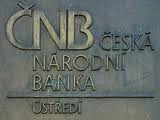Hat Trick Letter – listopad, 1.část

Předkládáme výňatky z první části. Výňatky z druhé budou následovat cca za týden.
Američané stěhují své vklady od velkých bank
AMERICANS ARE REMOVING FUNDS FROM THE BIG US-BANKS. THE ‚MOVE YOUR MONEY‘ MOVEMENT HAS HAD AN IMPACT. MUTLIPLY THE CASH REMOVED BY 10X TO 20X TO COMPREHEND THE IMPACT ON BANKS, DUE TO FRACTIONAL BANKING PRACTICES. THE BANK DEFENSES SEEM TRIVIAL. THE DESTINATION FOR THE FUNDS IS SMALLER BANKS AND CREDIT UNIONS.
Despite pleading by the big US banks for customers not to move their money, impressively 650 thousand customers moved a total $4.5 billion dollars out of the big banks. The funds went into smaller banks and credit unions in October. The myth swirling is that the big banks do not really care if money exits, since the USGovt and USFed will cover them. They do care, as deposits serve as an important part of reserves in their fractional banking practices. The personal stories are powerful. A woman withdrew her $200 thousand from Wells Fargo after speaking to a young arrogant branch manager, and closed her account. When asked, she explained her belief thatWells Fargo was part of the problem with the economy, and her account would be moved to the North Carolina State Employees Credit Union. Her husband is a state worker. A woman directed a Bank of America branch teller to close her multiple accounts, and to cut her a check for the full amount. They gave her one third of her money, mentioning daily limits. She had to come back the next day for the rest after waiting in line to speak to a manager. A flock of people awaited more withdrawals. At SunTrust, the branch manager lost his composure, asking twenty times is if there anything that they could do to change her mind, looking nervous. The woman was not interested in explaining or even meeting the market executive as suggested, to meet with her and hear out any concerns. She told him she was not interested. He showed his nervous condition. These stories were repeated at over a thousand bank branches last month. The big US banks are targets for citizen action. Smaller banks and credit unions are more trusted.
THE ENTIRE CONCEPT OF TOO BIG TO FAIL IS A HANGMAN’S NOOSE AROUND THE US-BANKS AND THE BANKING SYSTEM. THE DEBATE OVER CAUSE OR EFFECT IS CURIOUS. THE RELATED PROPAGANDA IS OBSCENE, IF NOT COMICAL. THE SMEAR CAMPAIGN AGAINST GOLD WILL TURN ABSURD, BEFORE THE USDOLLAR BREAKS PERMANENTLY ON THE WORLD STAGE.
Conformity with the Too Big To Fail doctrine is synonymous with the path to systemic failure. Charles Hugh Smith sees the destructive force clearly. The absent liquidity of the biggest Western banks assures the systemic failure itself. Smith wrote, „The irony is that the propping up of a deeply intrinsically pathological and destructive financial system is not saving the economy, rather it is the reason the economy is imploding. The Big Lie technique of propaganda is to reverse the polarity of reality: we are told up is down until we believe it. We are told that liquidating the overhang of bad debt, leverage, and hedges would destroy the world as we know it. The truth is that keeping the zombie system from expiring and covering up the corruption with propaganda is actually destroying the world as we know it.Thus the collapse of the current financial system of central banks, pathological Wall Street, and insolvent banks would be the greatest possible good and the greatest possible positive for the global economy and its participants.“
Japonský jen čeká růst
THE JAPANESE YEN CURRENCY IS READY TO JUMP STILL MORE. IT SHOULD FILL THE GAP AND REPEAT THE REBOUND LIKE IN AUGUST. JAPANESE FINANCIAL FIRMS ARE GRATEFUL FOR THE OPPORTUNITY TO DUMP USTBONDS AT A HIGHER EXCHANGE RATE. JAPANESE EXPORTERS ARE WORRIED SICK AS TRADE SUFFERS. THE BANK OF JAPAN IS WASTING MONEY, FLAILING IN FULL VIEW.
In the last 18 months, the Toyota market share in North America has fallen from 17.0% in 2009 to 12.8% in 2011. The Honda market share has fallen from 10.9% in 2009 to 9.4% in 2011. A combination of natural disaster impact, higher Yen, and global recession is the cause. The massive late October intervention by the Bank of Japan was estimated at least $50 billion, roughly equal to the early August intervention. However, history reveals such displays, however ostentatious, to be fleeting in effectiveness. More wasted money, mere subsidies for firms wishing to exit, given a better price. The rebounds are quick and powerful, since the result of the action is to offer an even better price to those parties seeking to sell whatever they sell, or buy whatever they buy.
In this case, the Japanese financial firms are selling USTBonds and US Stocks, even as Asian firms are retreating to the secure trench of Yen-based havens. They respond to reconstruction concerns and safe haven pursuits. If the J-Yen rises to the 131 level, which seems a very good bet given the momentum behind the gap filling process, the major central banks will be put on alert again. The directive theme has been Global QE, as all central banks will attempt to coordinate currency debasement. The gap of 128 to 132 will fill entirely, even to provide some strong upward momentum to clear 132 before year 2012 is too far along. Japanese strength and industrial muscle is too much for the gutted USDollar to resist. My forecast has been for simultaneous monetary expansion in all major currencies so as to hold the FOREX exchange rates as stable as possible, to minimize the disruption to those exchange rates, and to keep the USDollar as elevated as possible to prevent the global commodity costs from rising. That is Global QE. Recall the Jackass forecast in April, that the J-Yen would rebound with gusto and recognized force. It did exactly that, and BOJ intervention will not stop it.
Run na italské banky je tu
AN INVISIBLE BANK RUN IS OCCURRING IN ITALY. THEIR BANKS ARE TRAPPED, ATTEMPTING TO DE-LEVERAGE ON A PERILOUS TIGHTROPE. THEY HAVE DEVELOPED A BIG DEPENDENCE ON EURO CENTRAL BANK FUNDS. THE CDSWAP MARKET INDICATES AN EXPECTED ITALIAN DEFAULT. NEXT THE BANK DEPOSITS WILL EXIT.
Italian banks have grown dependent on the European Central Bank. They borrowed EUR 111.3 billion (=US$152 bn) from the central bank at the end of October, up from EUR 104.7 billion in September and EUR 41.3 billion in June, as per Bank of Italy data. The five biggest lenders accounted for 61% of the country’s draw on ECB funds in September, double that of January. The banks include UniCredit, Intesa Sanpaolo, Banca Monte dei Paschi di Siena, Banco Popolare, and UBI Banca. A quip quote came from Alberto Gallo, a credit strategist at Royal Bank of Scotland in London. He said „The banks are de-leveraging on a tightrope.“ They must reduce their debt load in a highly dangerous bond environment marred by distrust and volatility. The decline in Italian Govt Bonds has rendered great damage to the private banks, reducing their reserve ratios and eroding loan collateral to regular business credit. The Italian banks are trapped in the Italian sovereign debt securities.
The austerity plans being forced will ensure a recession, thus even more losses for the banks. The run on Italian banks is just beginning, to become more visible in a couple months. The bond market expects some calamities. The CDSwap tied to the senior debt of UniCredit (largest) jumped 150 basis points in November to 502 basis points, back toward the record reached in September. They serve as the bellwether. Debt insurance contracts on Intesa Sanpaolo (second largest) jumped 129 basis points to 467 bpts. Data is from CMA in London. The market anticipates a default event in Italy. It is assuming that Italy will fail. The next slam for the Italian banks is removal of depository funds. Despite a supposed solution in Ireland, the annual rate of decline in Irish private sector deposits was 10.5% by end September. In Greece, deposits fell in September for a whopping net outflow of EUR 6.29 billion, the largest monthly exodus in two years. The decline in balance sheet assets and removal of deposit funds work to kill the banks.
Jak jsou na tom americké nemovitosti
THE US-HOUSING MARKET REMAINS A TOTAL NIGHTMARE HELD DOWN BY PROFOUND NEGATIVE EQUITY. A GIGANTIC HOLE PERSISTS WITHOUT IMPROVEMENT OR SOLUTION. THE HOUSING MARKET WILL SERVE AS THE HANGMAN’S NOOSE AROUND THE USECONOMY’S NECK, LEADING TO SYSTEMIC FAILURE.
The USEconomy cannot recover when its grotesque insolvency does not improve. While the ruinedUS banking system is exposed as the broken credit engine, the ruined US housing market is exposed as the body in the Intensive Care Ward. The Jackass forecast has been consistent for four years.The housing decline will be chronic, deadly, unfixable, and lead to systemic failure, ultimately to USGovt debt default. The dissenting views have been shallow, easily cast aside over time. The new supply of homes in foreclosure is ample. The job loss and insecurity is constant. The need to de-leverage the entire USEconomy is acute. The banks are overloaded with a surplus of homes held in inventory, not to dare test the market with liquidation sales. The home prices would fall suddenly by 20% to 25% and cause a national panic, a mortgage bond collapse, and a string of bank failures. So the market insolvency continues like a festering wound with open sores and pus in full view. No solution is coming or planned.
The total aggregate value of negative equity associatd with 11 million residential properties in the United States is $710 billion. The proportion of homes with negative equity continues to rise, creating consumer zombies when the home has a loan balance greater than the home value. Negative equity can occur because of a decline in value, an increase in mortgage debt from interest accumulation, or a combination of both. Another quiet route has been excessive home equity withdrawal, like to cover college or medical costs. The soon to be negative supply is ample, the symptom of the chronic problem. In all, 2.4 million borrowers have less than 5% equity. Almost one third of American houses have the drag of negative or near negative equity. The homeowners are under burden, as over 75% of them are stuck in underwater properties with mortgage rates above the market. When in negative equity, the borrowers cannot capture the benefit of the low-rate environment. There are nearly 28 million outstanding mortgages that have above market rates and are therefore not refinanceable. The disparity is even greater when negative equity is severe. More than 40% of borrowers with 125% or higher loan-to-value (LTV) ratios have mortgages with rates at 6% or above, compared to only 17% for borrowers with positive equity.
Negative equity homes act like a disease contagion at the local area. It restricts refinancing and also sales. Here is a remarkable data point. Since the 2005 sales peak, non-distressed sales in zip codes with low negative equity have fallen 61%, compared to an 83% sales decline in high negative equity zip codes. A sick nearby zipcode affects its neighbor. Areas are affected even if sellers have equity. Similarly, if a home foreclosure liquidates for a sharply lower price, the entire neighborhood is affected on sales price. The total amount of loss in real household wealth from 2006 to 2010 has been $12.4 trillion, 70% of which was due to home equity destruction. The process is nowhere complete. Highlights are grim. Nevada has the highest negative equity percentage with 60% of all of its mortgaged properties in negative equity, followed by Arizona at 49%, Florida at 45%, Michigan at 36%, and California at 30%. Nationally, the level of mortgage debt still remains high relative to home prices.
________________________________________
Na základě souhlasu Jima Willieho budu zde pravidelně publikovat výňatky z jeho Hat Trick Reportu, jehož jsem předplatitelem. Výňatky budou publikovány formou citátů. Vybírat budu takové informace, které nejsou běžně dostupné. Formátování textu (tučné, podtržené, kurzíva, velká písmena) je původní.
Více informací na goldenjackass.com
I subscribe to Hat Trick Report and gained permission to publish extracts on my web. Formatting of text (caps lock, bold…) is same as in original report. I pick up information not available on main stream media.
For more information: goldenjackass.com
Upozorňuji čtenáře, že svolení Jima Willie se týká publikování pouze na webu www.proinvestory.cz. Kopírováním obsahu z těchto stránek by se ten, kdo kopíruje názor Jima Willie bez jeho svolení, dopustil porušení ochrany autorských práv Jima Willie.



